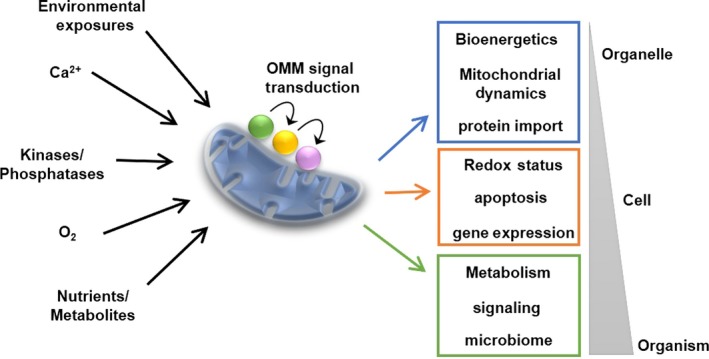Figure 1.

Mitochondrial signaling mechanisms regulate organelle, cell, and organisms physiology. Mitochondria are influenced by the intracellular and extracellular stimuli such as ions, metabolites, and molecules in the environment like oxygen and pesticides. However, the impact of signaling cascades in response to indirect actions of second messengers or stressors is emerging as significant manipulators of physiology. Mitochondrial signaling and second messengers have been shown to affect mitochondrial processes ranging from local events such as bioenergetics, mitochondrial dynamics, and proteins import to controlling transcriptional programs such as mitochondrial biogenesis, gene expression, and redox homeostasis. Of course, mitochondria are crucial to cell viability because the organelles are home to cell death machinery. Mitochondrial signaling can also transcend the cell through metabolites, second messengers, and even extracellular vesicles to impact metabolism, immune responses, inter‐tissue signaling, and the microbiota within an organism. Mitochondrial signaling has emerged as a critical component to human health and disease. The stimuli and transcriptional programs converge on signaling proteins on the outer mitochondrial membrane (OMM), which are uniquely positioned to receive and convey signals from both cell and organelle. Discrete OMM signaling events then coordinate mitochondrial and cellular responses to adapt organelle, cell, and organismal physiology to the current environment
